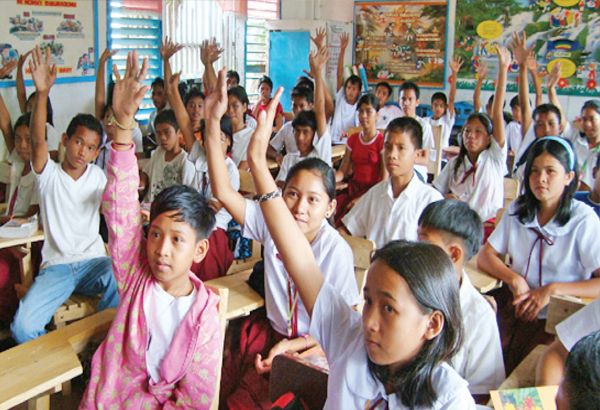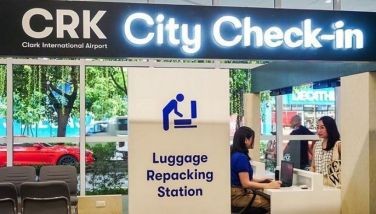Fighting poverty under Aquino: A balanced assessment
Much ink has been spilled attributing the resounding victory of Davao City Mayor Rodrigo Duterte to populist anger over the Aquino government’s failure to address poverty. This, despite the rapid growth of our economy, now acknowledged—at 6.9 percent this quarter alone—to be one of the fastest growing in Southeast Asia. As the process of administrative transition gets underway, it is worth considering to what degree this popular indignation is warranted.
Thirty years after EDSA, poverty continues to be one of the country’s greatest challenges. How did the Aquino government measure up to this challenge? A balanced assessment would suggest that it made a host of significant strides, but also had some glaring failures.
PNoy’s campaign and policies were built on a series of anti-poverty programs which he branded in what is by now a cliché and the object of fierce debate and criticism: “Daang Matuwid,” or the Straight Path. Indeed, one of his campaign memes was: “Kung walang korap, walang mahirap” (that is, “If there is no corruption, there is no poverty.”) Substantial government resources were indeed committed to fighting corruption, although some might argue that this was often selective and tended to spare administration allies equally guilty of excess. One could also argue that fighting corruption is not in itself a meaningful anti-poverty strategy. Still, the amount of investment in social service expenditure by the Aquino administration remains unmatched by previous administrations.
What is perhaps less known is the origin of the idea for “human development,” which informed the administration’s approach to poverty reduction. It is based on Indian economist and philosopher Amartya Sen’s “capabilities approach,” wherein human development focuses on maximizing individual choice to achieve a better life. It seeks, in other words, to offer a range of opportunities for every individual.
According to Sen, the enhancement of human capabilities are predicated upon the enhancement of political freedom, including civil rights; economic opportunities, including access to credit; social opportunities, such as access to health, education, and social services; transparency; and social safety nets, such as unemployment benefits and emergency relief.
Some argue that, after six years in office, Aquino’s achievements have edged closer to realizing Sen’s “capabilities approach.” In some respects, it has exceeded expectations by outperforming all previous administrations. The country’s average annual Gross Domestic Product (GDP) growth rate is at 6.3 percent--the highest in the last four decades. Inflation has remained steady at an average of 1.4 percent, and real GDP per capita grew almost 18 percent between 2010 and 2015.
Employment has likewise seen significant increases. From 92.7 percent in 2010, it rose to 93.5 percent in the last quarter of 2015, translating to a growth from 444,811 new jobs in 2009 to 1.2 million by 2015. Meanwhile, unemployment dropped sharply from 7.3 percent in 2010 to 5.8 percent as of the first quarter of 2016.
The poor, however, have only been marginally involved in this economic progress. Many new jobs have been limited to call centers and other forms of business process outsourcing. Also, those fortunate enough to find employment often only find jobs of poor quality in which they work on a contractual basis, receive low wages, and have no additional benefits.
Nonetheless, at P1.1 trillion, the Aquino administration spent considerably more on anti-poverty measures than the previous administration, which spent only P415.8 billion. For basic education alone, the government allocated P410.4 billion for 2016. Over the course of the last six years, these priority public investments in education have resulted in the construction of 89,720 classrooms built from 2010 to March 2016, and another 95,429 scheduled for construction before Aquino’s term ends.
Conditional Cash Transfers or CCTs, otherwise known as Pantawid Pamilyang Pilipino Program (4Ps), first begun under GMA, have been expanded under Aquino as the administration’s flagship anti-poverty measure. Currently, CCTs cover 4.6 million poor households that receive benefits of up to P1,300 per month to keep children healthy and in school. Of that 4.6 million, 1.5 million households have risen out of poverty as a result. Yet while they are already considered non-poor, so long as their incomes lie just above the average poverty threshold of P11,000 per month, they remain vulnerable.
 ??
??
The Pantawid Pamilyang Pilipino Program (4Ps) offers poor Filipino children and their families education and health care. Philstar.com/File photo
Thanks to the 4Ps, 333,673 students have graduated from high school—with 13,469 finishing with honors and 80 passing the University of the Philippines College Admission Test. For tertiary education, the Commission on Higher Education implemented a Student Grants in Aid Program which, in the last five years, has seen 2,931 scholars graduate from college—85 of them with honors.
Additionally, technical-vocational training (TVET) programs under the Technical Education and Skills Development Authority (TESDA) produced more than 9.5 million graduates who otherwise would not have been able to go college. TVET graduates are trained in skills they may employ here or abroad, such as call center agent work, electronics, appliance repair and computer hardware servicing, heavy equipment operation, welding, food and beverage service, and housekeeping and domestic work. The positive impact of TVET in skills development and employment generation may have contributed to TESDA Secretary Joel Villanueva’s ranking number two in the recent senatorial elections—aside from the fact that he happens to be the son of famed preacher and two-time presidential candidate Bro. Eddie Villanueva.
As for public health, almost all Filipinos (93.45 million) are now covered by the Universal Healthcare Program of PhilHealth. Of these, 1.2 million poor receive government subsidized health services. These PhilHealth subsidies are financed by the “sin tax” collected from tobacco and liquor companies. However, Undersecretary Lilibeth David of the Department of Health notes that only 50 percent of PhilHealth’s members actually make use of their memberships, while only 30 percent of health services are subsidized by PhilHealth. Remaining expenses, including doctors’ fees and medicines, must be paid for out of pocket.
Lastly, seeking to ensure that economic growth translates into income increases for the poor faster than inflation—creating better quality employment opportunities—the government implemented the Accelerated and Sustainable Anti-Poverty Program (ASAP). In particular, the program targeted 10 provinces with high poverty magnitude and linked them with government services, private businesses, and growth hubs within their respective provinces. Currently, there are 1,300 projects in the social preparation and implementation stages to promote employment and livelihood in these provinces.
But serious concerns about the government’s anti-poverty program remain. National Anti-Poverty Commission Chair Joel Rocamora admits that, overall, human development and poverty reduction under the Aquino administration has been negligible, with only a little more than a one percent decrease in poverty incidence and more than 25 million Filipinos remaining poor. He also laments that Aquino is the only president who never convened a NAPC Basic Sectors en banc meeting—which, in the final analysis, means he never directly consulted the representatives of the poor.
Rocamora also clarifies that the 4Ps are meant to address intergenerational poverty, but do not significantly reduce poverty incidence as it currently stands, further explaining that the 4Ps’ impact on families living in Metro Manila is low due to the high cost of living. Instead, the impact is felt more in the provinces, where even a small amount from the 4Ps can go a long way to sustaining the health and education requirements of beneficiaries. Moreover, he notes that ASAP was approved little more than a year ago, with implementation of some of its projects delayed.
Rocamora agrees with Aquino’s critics that the GDP had low impact on poverty and failed to translate into inclusive growth. He also notes that, while OFW remittances and employment in call centers did help the poor and the economy, little attention was paid to the need to sustain productivity in the agriculture and manufacturing sectors.
A bigger problem has been government’s failure to address inequality itself. For instance, Community Innovations Study Center Director and UP Los Baños Researcher Blanquita Pantoja explained that government was able to distribute only 46 percent to 59 percent of targeted landholdings in the last five years. Worse, thousands of Agrarian Reform Beneficiaries remain uninstalled—unable to make productive use of the lands already awarded to them. A total of 800,000 hectares of private agricultural lands have been left to the next administration for Comprehensive Agrarian Reform Program distribution.
To be fair, the Aquino government’s efforts at poverty reduction would have had greater impact had it not been for the onslaught of disasters during his term: the Zamboanga siege, the earthquake in Bohol, numerous typhoons—including Super Typhoon Yolanda—as well as the current el Niño phenomenon and the serious dangers it poses, particularly to agricultural communities.
Clearly, the outgoing administration made notable strides in fighting poverty and sustaining robust economic growth. But, despite the achievements like the 4Ps, PhilHealth and the record levels of GDP growth, the net effect has not been enough to offset current poverty and generate inclusive growth.
Since jobless growth and inclusivity will be key economic issues for Aquino’s successor, it is important for the Duterte administration to translate macroeconomic achievements into tangible gains in human development. Employment is especially critical: with continuing problems of low employment generation, contractualization, and poor quality of jobs, the coming administration must find ways to get the private sector to partner in creating expanded job opportunities in agriculture, manufacturing, and tourism—sectors making significant contributions to our national economy that require intensive labor productivity to sustain growth.
Most pressingly, Aquino’s successor must address the growing problem of inequality. It must have the political will and resolve to complete agrarian and urban land reform and provide the necessary support services to its beneficiaries; end militarization among indigenous peoples, who should finally be awarded their ancestral domains; and pass some equivalent of the Bangsamoro Basic Law to bring lasting peace and development to war-torn Muslim Mindanao. Only when the poor finally benefit from the fruits of economic growth will any administration retain public popularity and truly prosper.
- Latest
- Trending






















